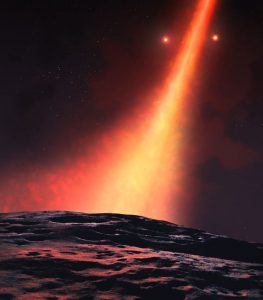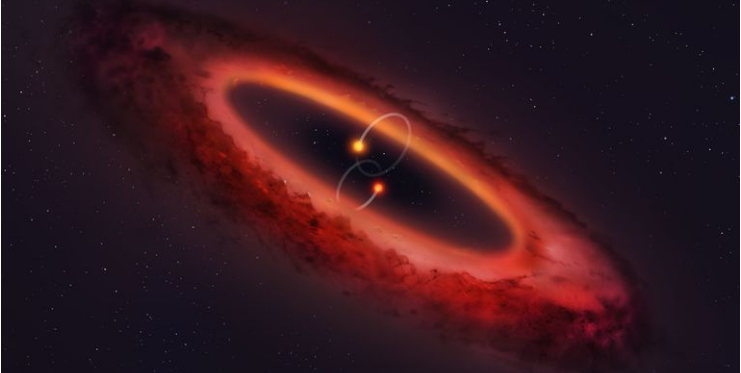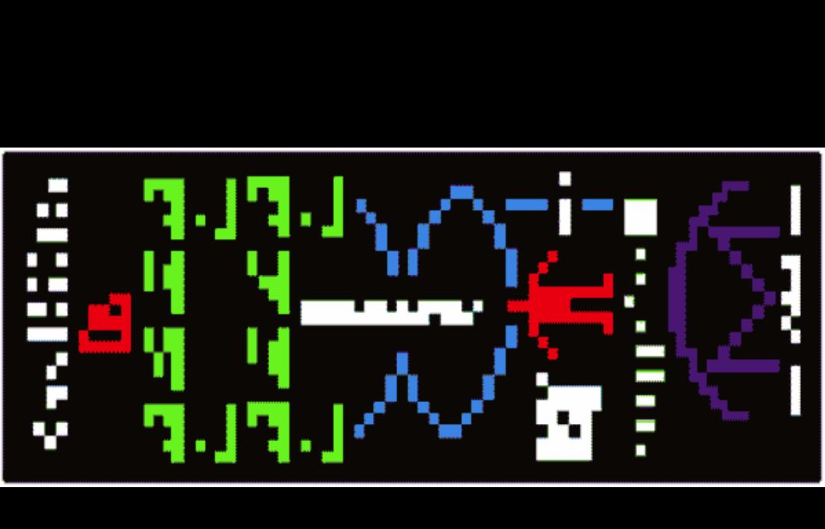Our Solar System has got one star and a handful of planets, and that’s really all we need. But other systems can have much more than that, often coming with two or—rarely—three stars orbiting each other. One group of astronomers has gone even further, managing to find a bizarre quadruple star system hiding just 146 light-years away.
The system, named HD 98800, was discovered by astronomers using the Atacama Large Millimeter Array, a giant radio telescope located in Chile. The radio telescope was key to discovering this system because the stars were surrounded by a protoplanetary disk—a ring of dust and gas found in very young systems before planets have been formed. Eventually, this dust and gas will collapse to form planets, but until then this disk blocks most light from escaping the system.

Radio waves, however, can pierce through the dust, and using a radio telescope, scientists were able to spot four separate stars inside that dust. These stars form two binary pairs, one right in the middle of the system and one orbiting billions of miles away. In true astronomer fashion, the outer pair are named Aa and Ab, while the center pair are named Ba and Bb.
Read more HERE





































